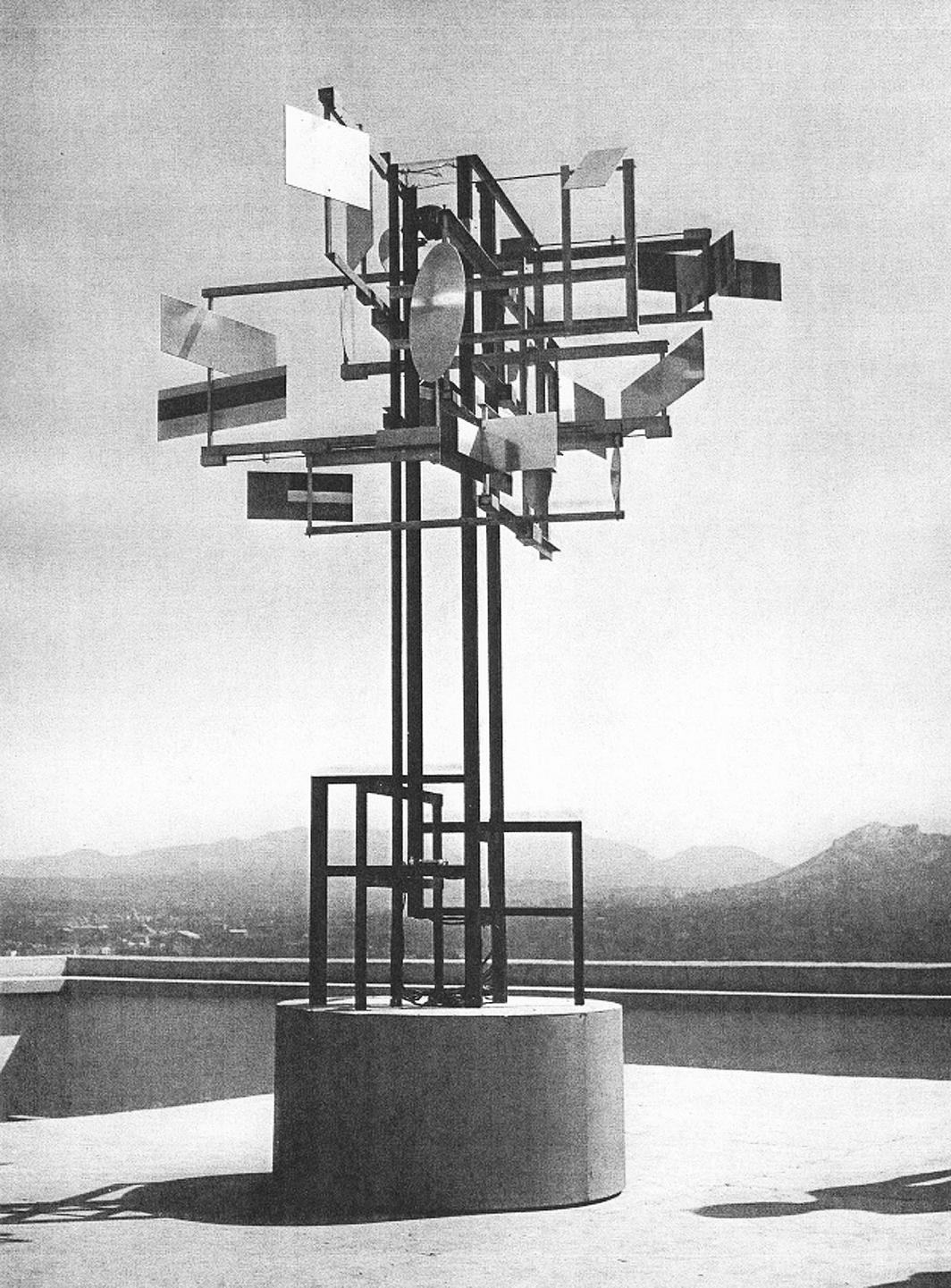
László Moholy-Nagy
Light Space Modulator
“This piece of lighting equipment is a device used for demonstrating both plays of light and manifestations of movement. The model consists of a cube-like body or box, 120 x 120 cm in size, with a circular opening (stage opening) at its front side. On the back of the panel, mounted around the opening are a number of yellow, green, blue, rot, and white-toned electric bulbs (approximately 70 illuminating bulbs of 15 watts each, and 5 headlamps of 100 watts). Located inside the body, parallel to its front side, is a second panel; this panel too, bears a circular opening about which are mounted electric lightbulbs of different colors. In accordance with a predetermined plan, individual bulbs glow at different points. They illuminate a continually moving mechanism built of partly translucent, partly transparent, and partly fretted materials, in order to cause the best possible play of shadow formations on the back wall of the closed box”. László Moholy-Nagy

